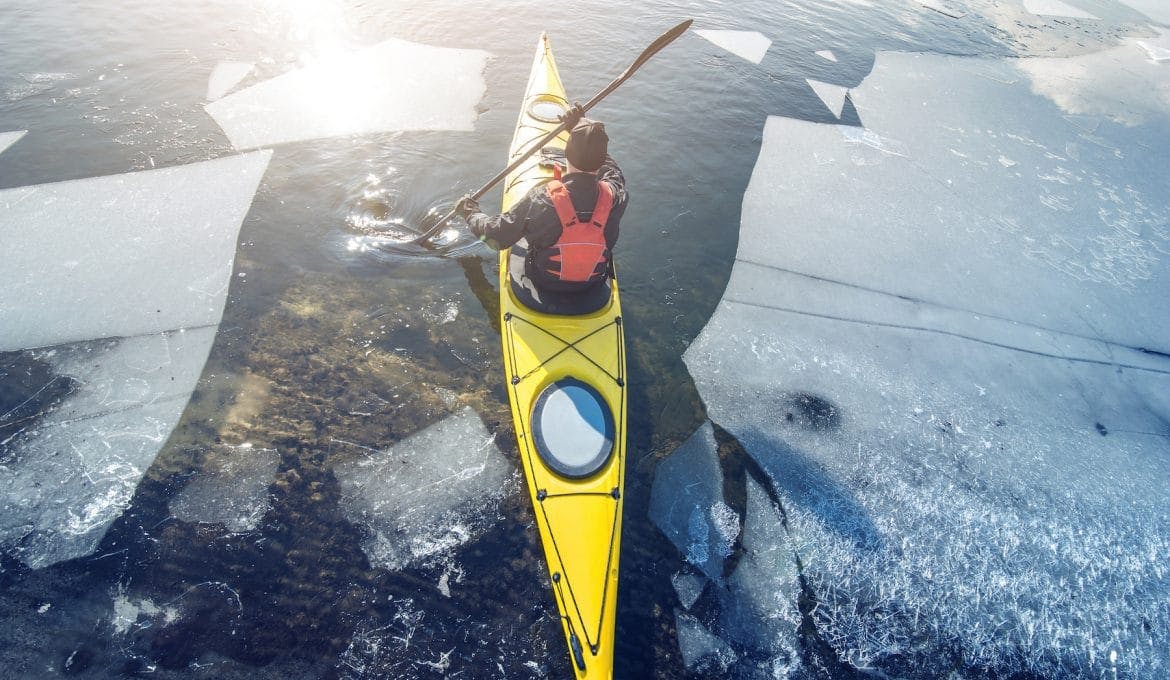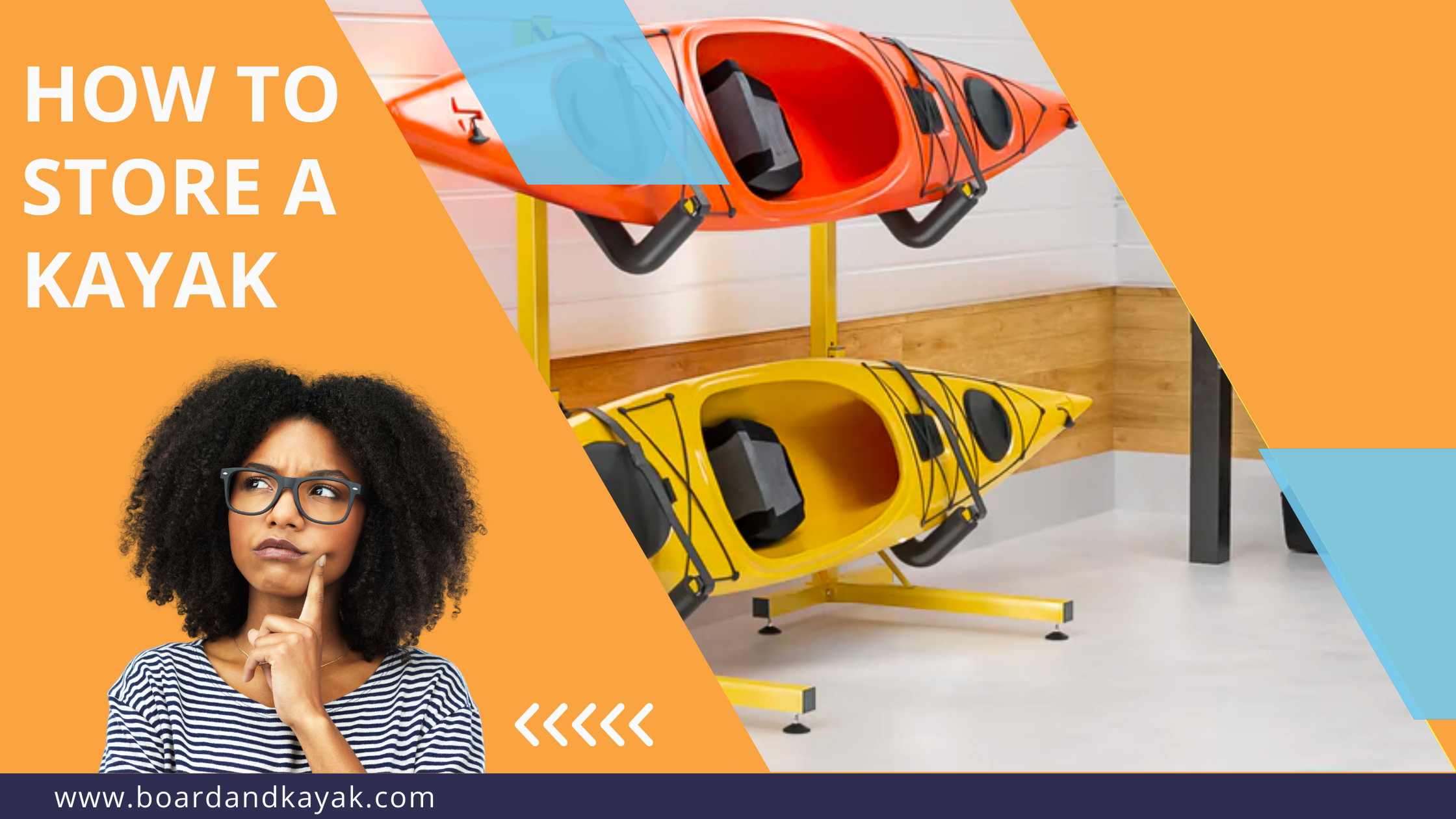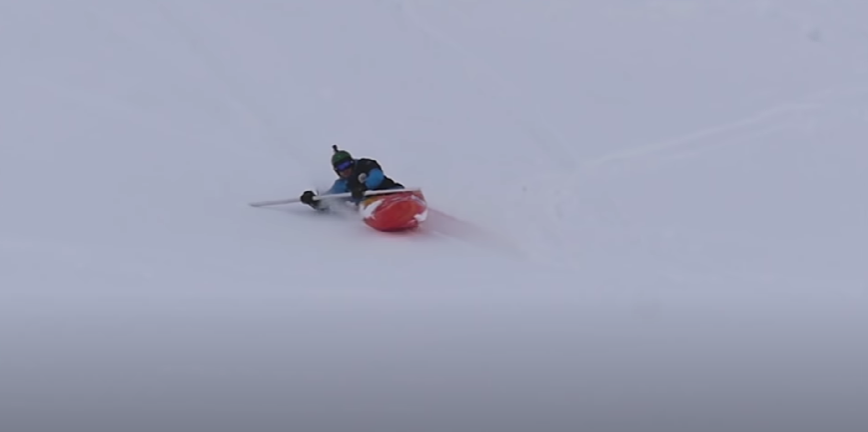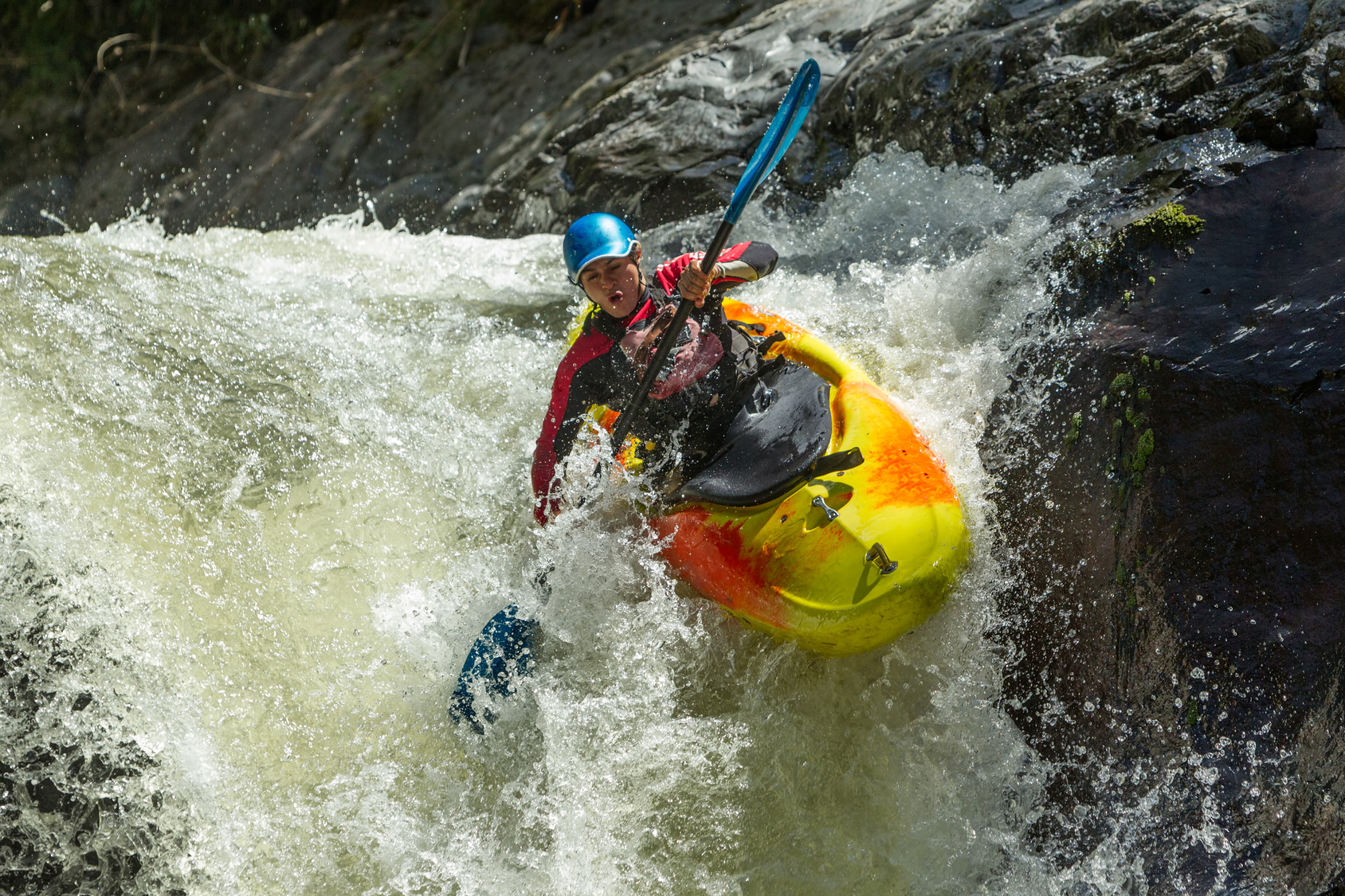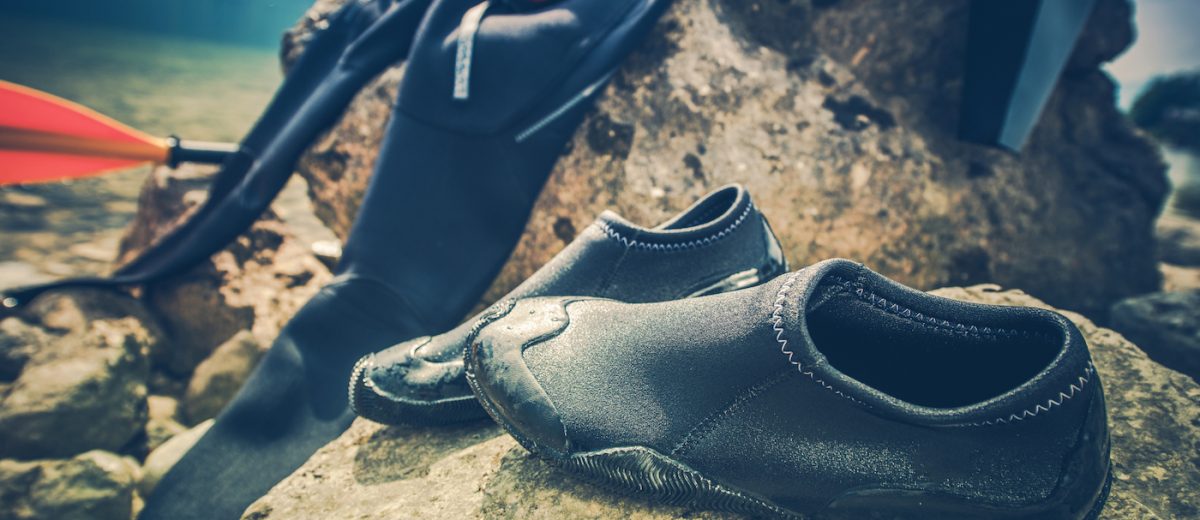
- Alabama
- Alaska
- Arizona
- Arkansas
- California
- Colorado
- Connecticut
- Delaware
- Florida
- Georgia
- Hawaii
- Idaho
- Illinois
- Indiana
- Iowa
- Kansas
- Kentucky
- Louisiana
- Maine
- Maryland
- Massachusetts
- Michigan
- Minnesota
- Mississippi
- Missouri
- Montana
- Nebraska
- Nevada
- New Hampshire
- New Jersey
- New Mexico
- New York
- North Carolina
- North Dakota
- Ohio
- Oklahoma
- Oregon
- Pennsylvania
- Rhode Island
- South Carolina
- South Dakota
- Tennessee
- Texas
- Utah
- Vermont
- Virginia
- Washington
- West Virginia
- Wisconsin
- Wyoming
Winter Kayaking Gear: Tips For Paddling, Kayak Gear Clothing, And Accessories
Tips For Winter Kayaking
I have been traveling a lot recently where I spent most recent winters in warm countries. Since this is my first winter season since 2014, I'm planning to enjoy it. Taking that into account, I collected some tips on how to dress for paddling in cold conditions so that you can still enjoy the magic of getting out on the water. Whether you plan to be throwing down some freestyle kayaking action or hitting up your favorite run.
If you are like me, there's no reason you can't go swimming just because it's chilly out and assuming all of your streams have not become wholly frozen over ❄️!
The most important thing is to prepare appropriately for the weather to have a good time still. I have such incredible gear, I can continue enjoying the ocean surf and river kayaking even when the ground and air are frozen. So, what to wear kayaking in winter?!
If You Own A Dry Suit, Wear It
My dry suit has never won my heart quite the way it does in winter. If you can keep your body warm and dry while out on the water; I bet you that you will enjoy yourself more. If you do not have a dry suit, a high-quality dry shirt and pant combination will suffice (given that you do not swim). Because it repels water and allows for optimal breathability, Gore-Tex is the material of choice for cold-weather and winter paddling gear. When it comes to a waterproof layer, though, having anything is preferable to having nothing at all.
Prepare Yourself For The Conditions
Prepare Yourself For The Conditions
For Winter Kayaking, I like to wear fleece insulation underneath my dry clothing since it helps keep me warm. The thick Polartec OuterCore layer helps me retain my body heat and maintain a comfortable temperature throughout the day without requiring me to wear many layers of clothing that restrict my mobility. However, you may adjust the number of layers you wear according to the weather you expect.
The Proper Kayak Wetsuit In Winter
Winter kayaking clothing is mainly dry suits; a dry suit's purpose is to protect yourself from cold water (and air). Besides being waterproof, it has watertight gaskets at the openings to keep you completely dry. Underwear or another layer that provides insulation can be worn under long underwear to adjust the temperature. A wetsuit is still required if the air is not cold, but the water is, which happens a lot in winter as well.
Things we like:
- Neoprene,Latex
- Shell Material: Eclipse, Nanosphere DWR treatment
- Neck Material: GlideSkin neoprene
- Splash Collar: HyproTex
- Hood: yes
- Cuff Material: latex
Things we don't like:
- Neoprene and latex materials may cause allergies or sensitivities in some individuals.
- Eclipse shell material may not provide adequate warmth in extremely cold conditions.
- Nanosphere DWR treatment on the shell material may wear off over time, reducing its water-repellent capabilities.
- GlideSkin neoprene on the neck may cause discomfort or irritation for some users.
- HyproTex splash collar may not effectively prevent water from entering the suit during intense water activities.
- The inclusion of a hood may restrict visibility or airflow for some users.
- Latex cuff material may be prone to tearing or degradation with frequent use.
Keep Your Head Warm!
Your head is responsible for a significant portion of the heat you lose. Always make sure you have a helmet on, not just for your protection but also so that your head stays warm. Words cannot express how important I believe it is for you to wear a skullcap underneath your helmet. Not only does this trap far more heat, but it also helps reduce the ice-cream headache associated with winter paddling and kayaking in winter. It's also possible that using earplugs will help your body stay much warmer. It is remarkable how much heat escapes via your inner ears when there is a constant flow of cool water into and out of them. Additionally, it will prevent possible surgery in the future and protect your hearing.
Do You Get Chills In Your Hands And Feet While Paddling And Using Kayaks?
You should consider investing in pogies if you have poor circulation like I do or if the cold and wind chill is too much for you to handle. They do not prevent you from being able to feel your paddle naturally. Still, they shield and insulate your naked skin from severe temperatures, keeping your hands warm and allowing them to continue operating! It is also possible to use gloves; however, the size of my hands makes it more difficult to grasp my paddle when wearing heavy gloves. For this reason, I like pogies since I can continue to feel the paddle shaft and maintain a regular grip on it. When you go winter paddling, having a good pair of warm booties or shoes that provide insulation will assist keep your entire body warm and comfortable. Because you lose a significant amount of heat via your feet, wearing warm footwear can help you maintain healthy circulation and keep your body at a comfortable temperature. Neoprene shoes such as the Portage will allow for a comfortable fit in your kayak and keep your feet warm, even if they become wet. If you have a dry suit that comes with socks, you may put wool socks underneath it to keep your feet toasty warm, in addition to the socks that come with the dry suit.
Things we like:
- Neoprene provides an exceptional degree of heat protection
- a snug and close fit
- An adequate amount of hold
Things we don't like:
- Only applicable when the temperature is low
- Sizes run small
When Is The Water Too Cold To Paddle On?
This is just one side of the argument. The other is the thought of having to paddle against the wind for a considerable distance after being submerged in icy brine on a cloudy winter morning, on a river that has been cooled by snowmelt during the shoulder season, or simply after being submerged unexpectedly.
Even water that is only slightly above freezing, at a temperature of sixty degrees Fahrenheit, can be highly hazardous: The risk of suffering from hypothermia and cold shock is always present for everybody who goes kayaking. If the temperature of the water you're paddling in is 60 degrees or lower, or if the temperature of the water and air combined add up to less than 120 degrees, the American Canoe Association advises paddlers to wear protective insulating gear. This is the case even if the air temperature exceeds 120 degrees because your body loses heat more quickly when wet and exposed to a breeze. Getting damp and then paddling on a day when there is a breeze can be a formula for disaster, even if the water is not particularly cold.
What kinds of things fall under the category of protective insulating gear? Wear a wetsuit or a dry suit to stay warm while paddling in cold water. The first type, which can include neoprene of varied thicknesses, has a chamber in the middle that can hold a small quantity of water and keeps it warm with your body heat. In comparison, a drysuit is entirely waterproof: Even when completely submerged, you won't get wet because it is made of waterproof polyurethane or the more breathable Gore-Tex. Under a dry suit, you should wear layers that wick away moisture; polypropylene is an excellent choice. However, you may only require one or two of these layers, so it is important not to overdress. A wetsuit does not need any additional layers to be worn underneath it.
If you are going to be kayaking in water that is exceptionally cold or in conditions that are particularly rough or in bad weather, you should give some thought to purchasing a dry suit. Wetsuits sometimes fall short in these kinds of settings. Despite this, it is possible to wear a wetsuit in conjunction with other protective layers, such as dry tops, which prevent water from entering the neck hole and cuffs of the dry suit and seal it into the spray skirt.
You can keep your hands warm with neoprene, nylon gloves, or mittens, but you will lose some contact with the paddle. A suitable alternative is a pogie, a waterproof and insulated pocket inside which you may continue to grasp the shaft as you usually would. Paddling jackets, booties, and caps are all great pieces of additional protective clothing to have.
Also, keep in mind that your flotation device, which you should wear at all times regardless of the temperature of the water, provides you with an additional layer of safety when you are in cold water: It indeed offers supplemental insulation, but by fulfilling its primary duty, which is to keep you buoyant, it exposes that much less of your body to the water, which in turn reduces the likelihood that the water would cause shock.
All The Kayaking Accessories You Need
Kayaking accessories are essential when you're paddling a kayak. You need these kayak accessories for a fun and enjoyable kayaking and paddling experience. Kayak gear accessories, from wheel systems to covers, will help you get to the water without fuss and set the stage for a great trip. The kayak accessories include a wide range of options, including the must-haves, such as rod holders, and the nice-to-haves, such as seat cushions, designed to improve the kayaking experience.Like a Life jacket (PFD), Whistle, Rescue throw rope, Spray skirt (for cold and winter weather/water), dry bag, and dry wetsuit.Kayak gear basics can be summed up in a few words, and they can consist of just a paddle and a life jacket as the necessary items. It is still not enough to satisfy the essential safety requirements in many regions, nor is this a best practice for the industry itself. If you are unsure about the rules in your area, check with your local authorities.
Related What to wear kayaking?
PFD
Things we like:
- USCG Approved: type V
- Flotation / Buoyancy: [XS/S] 16 lbs 5 oz, [M/L] 17 lbs 5 oz, [XL/XXL] 18 lbs
- Tow Compatibility: yes, stretch mesh sleeve
- Closure: side entry
- Pockets: 1 large front
Things we don't like:
- Limited flotation/buoyancy options: The product only provides [XS/S] 16 lbs 5 oz, [M/L] 17 lbs 5 oz, [XL/XXL] 18 lbs buoyancy, which may not be suitable for all users.
- Limited pocket space: The product only has 1 large front pocket, which may not be sufficient for users who require more storage.
It is importatn to always wear a personal flotation device (PFD) that fits and covers your head. While in the water, this will assist keep you warm and protect you from accidents. Winter makes me appreciate my Maximus Centurion Personal Flotation Device (PFD) even more because of its high level of flotation and the fact that I can tighten it to keep my entire torso warm.
Boat And Spray Skirt
Please make sure that both your boat and its spray skirt do not have any leaks. Doing this will prevent the water from reaching your lower body, which will keep you warmer for extended periods. This also means that you may play for more extended periods without worrying about your boat running dry.
Frequently Asked Questions
Is It Okay To Kayak In The Winter?
Most kayakers store their boats for the winter, but this isn't a requirement for anybody who wants to get out on the water. Winter is frequently considered the ideal season for paddling because there are fewer people on the water, abundant water in many parts of the country, and the landscape is rougher. But it should not be a surprise that paddling during the winter requires some good gear to keep you comfortable on the lake.
How Cold Is Too Cold To Kayak?
The National Center for Cold Water Safety advises using extreme caution when handling any water with a temperature lower than 70 degrees Fahrenheit or 21 degrees Celsius. "Cold shock" can be an urgent threat to a person's life when the water temperature is below 60 degrees Fahrenheit or 15 degrees Celsius. When you experience cold shock, you lose control of your breathing, your heart and blood pressure are disturbed, and your ability to think properly is hampered.
What Do You Do With A Kayak In The Winter?
Keep your kayak protected from the elements by storing it in a garage, shed, or under an awning if you have the option. If you live in an area that receives a significant amount of snow and ice, you should not leave your kayak sitting outside in areas where it is exposed to strong sunlight or where it is at risk of totally freezing over.
What Do You Wear Paddling In The Winter?
Both warmth and protection from the sun can be provided by wearing a rashguard or base layer shirt with long sleeves. If the temperature is low, you should wear something warmer. You should bring a light fleece jacket as well as a rain jacket or a paddle jacket with you just in case the weather turns colder and wetter than expected. This will allow you to cover your arms.
Will A Kayak Crack In Winter?
In point of fact, the sun's rays can cause significantly more damage than the cold can. If you choose to store it outside, be sure that snow doesn't accumulate on it and that trees don't fall on it. It may not seem like a big deal, but if you live in a region that gets a lot of snow or has a lot of trees, severe winds or heavy snowfall can destroy your canoe or kayak. The use of warm storage is preferable to the use of cold storage.
What Do You Need For Winter Kayaking?
When you go winter paddling, having a good pair of warm booties or shoes that provide insulation will assist keep your entire body warm and comfortable. Because you lose a significant amount of heat through your feet, wearing footwear that is warm can help you maintain healthy circulation and keep your body at a comfortable temperature.
